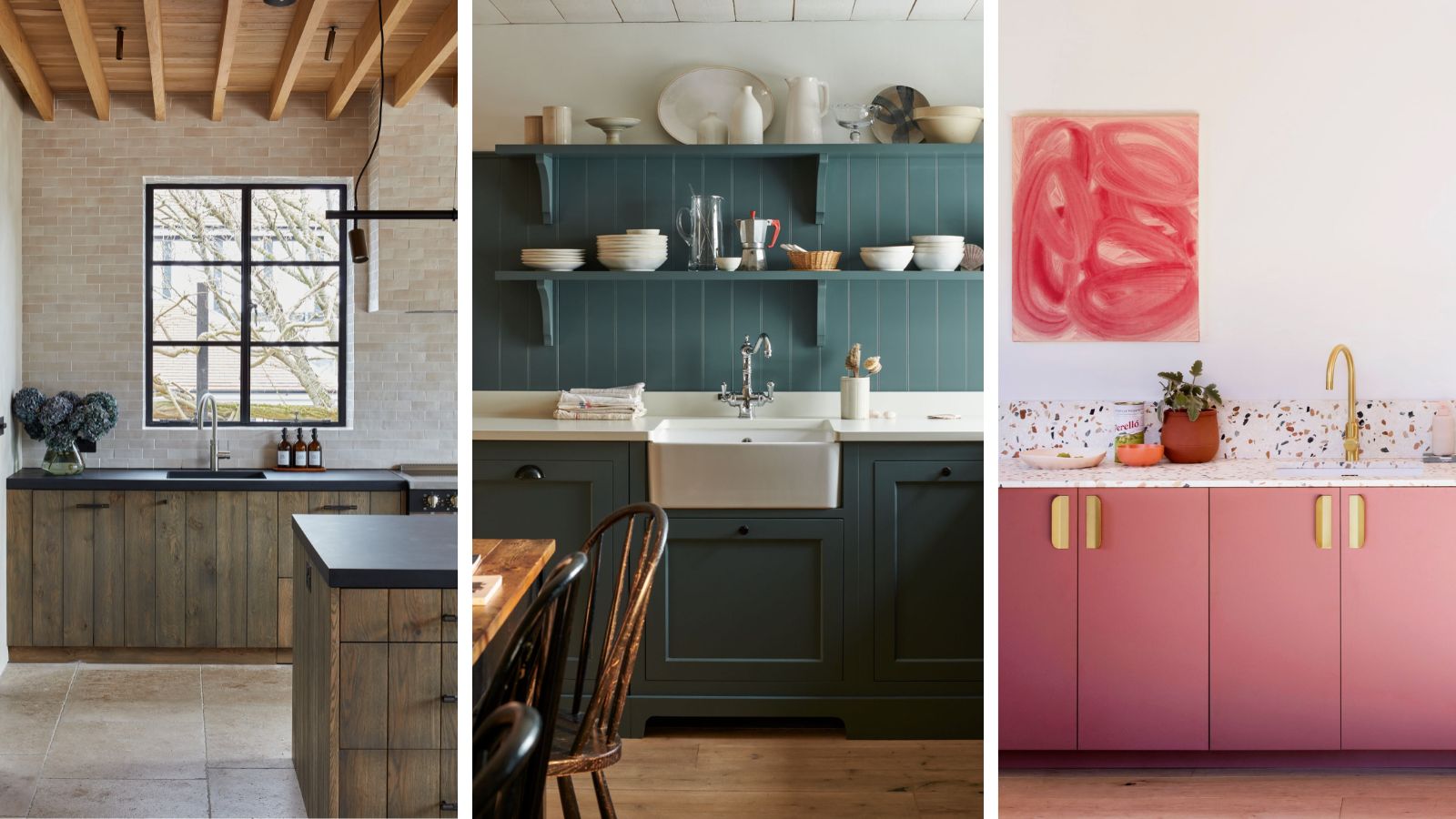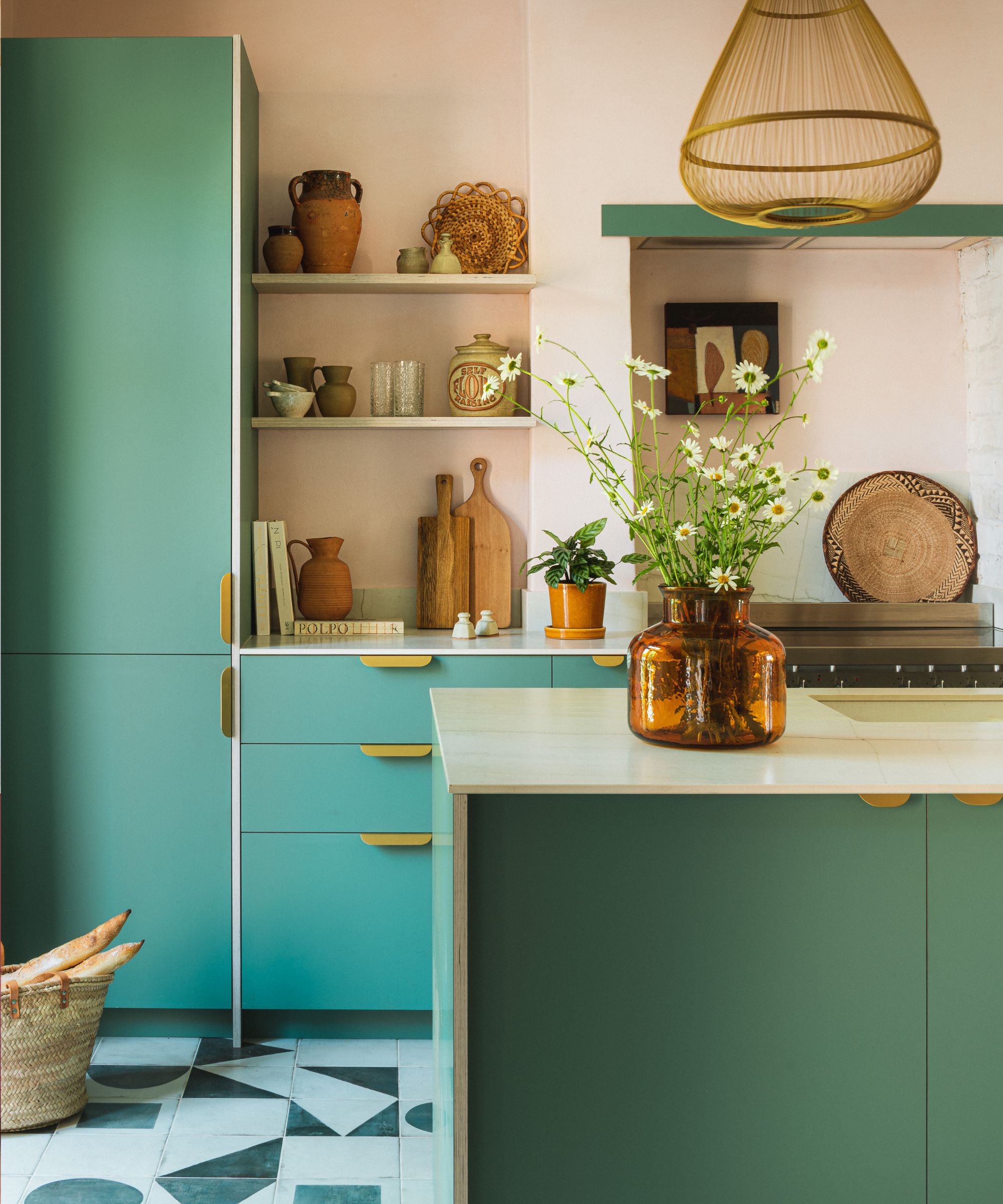What are the best materials for kitchen cabinets? 6 designer-approved options to have on your radar
As the hub of the home that takes a lot of wear and tear, your cabinets need to be good-looking and hardy. Here's all you need to know

While kitchens are often described as the hub of the home, and as the cabinets are the most well-used, visually impactful and expensive part of a kitchen, your choice of design should not be taken lightly.
Kitchen cabinets can well and truly make or break a space, in terms of both how it looks and functions. 'When designing a kitchen, selecting the right materials for cabinets is crucial for achieving a balance of functionality, durability, and aesthetic appeal,' says Allison Kaminsky, lead designer at Lola Tucker Interiors.
'The choice of cabinet material can significantly impact your kitchen's overall look and feel, as well as its long-term performance and maintenance requirements,' Allison continues.
But when it comes to choosing a cabinet material, there isn't a one-size-fits all answer to which is best. Your specific space, the look you want to create, how you will use the kitchen and how long you want it to last, are all key features in determining which is the best kitchen cabinet material for you. Here are our top six...
1. Solid wood

Solid wood is a classic and failsafe material for kitchen cabinets. 'Solid wood is a timeless choice, known for its durability and classic look,' says Rosemarie, interior designer at Rosemarie Bespoke Designs. 'Types of wood commonly used include oak, maple, cherry, and walnut, each offering unique grain patterns and colors.'
Solid wood cabinets require a certain amount of upkeep, which must be kept in mind. 'While solid wood is durable, it requires regular maintenance to prevent warping, cracking, and damage from moisture,' says Rosemarie. 'Proper sealing and periodic refinishing can significantly extend the lifespan of wood cabinets.'
If you want to match up the color of your cabinets with a shade used in the rest of your room, wood is a great choice as you can paint the cabinets in any hue. 'Solid wood cabinets can be stained or painted to match any kitchen design, providing versatility in aesthetics,' says Rosemarie.
Design expertise in your inbox – from inspiring decorating ideas and beautiful celebrity homes to practical gardening advice and shopping round-ups.
If you leave your natural wood grain exposed, however, this does bring a certain charm to your space too. 'Solid oak is the quintessential material for kitchen cabinetry and combines form with function,' says Fred Horlock, design director at Neptune. 'Its natural warmth and rich grain patterns bring an organic feel to any kitchen, making each space feel unique and personal.'
2. Reclaimed wood

Sustainability and waste are huge issues within the interior design industry, and this includes kitchens. One way to help reduce waste is to use reclaimed wood for your kitchen cabinets.
'From Mountain Ridge Parquet to Reclaimed Douglas Fir, reclaimed engineered wood is a versatile and dynamic material that provides an array of benefits to a kitchen,' says Alex Main, Director at The Main Company.
'Typically salvaged from interesting buildings like old textile mills, barns and historic buildings, by choosing reclaimed wood for your cabinets, you’re providing the raw materials with a new purpose – making use of resources to make something new which is not only sustainable but stylish,' Alex continues.
'No piece of reclaimed wood is identical, so no kitchen using reclaimed wood will be either, resulting in a unique space that differs from home to home,' says Alex. 'The inherent natural character and wood grain of reclaimed wood adds a traditional, rustic aesthetic to kitchens.' Reclaimed wood is also naturally antibacterial, meaning it is easy to clean and great for family kitchens.
Alex points out that reclaimed wood should ideally be engineered, and there are not many companies which do this. 'Ensuring it is engineered will stop the wood from twisting, shrinking and splitting which can occur in solid wood. Reclaimed engineered wood cabinets therefore look just like antique planks, but have the ridged structure of an engineered floor.'
3. Plywood

Plywood is a popular choice for kitchen cabinets due to its strength, stability, and affordability.
'Plywood is super durable, can handle heavy use without warping or cracking, and it's highly resistant to moisture, which is really important in a busy kitchen,' says Jim Leach, Founder of Wood & Wire.
But what actually is plywood? 'It is an engineered wood product made by layering thin sheets of wood veneer, which are glued together with alternating grain directions to enhance durability and reduce the risk of warping,' says Allison Kaminsky.
'The key benefits of plywood are its strength and stability. This robustness ensures that plywood cabinets can withstand frequent opening and closing, exposure to moisture, and the weight of heavy kitchenware,' says Allison. 'The cross-grain construction minimizes expansion and contraction, making it less susceptible to warping and cracking than solid wood.'
Plywood cabinets can be finished with various veneers or laminates to achieve different looks. They're also easy to repair – 'minor scratches and dents can be sanded out, and damaged sections can be replaced,' says Allison.
4. MDF

'Medium-Density Fiberboard (MDF) is an engineered wood product made from compressed wood fibers and resin,' says Allison. 'It is a cost-effective alternative to solid wood and is widely used in kitchen cabinets due to its smooth surface and ease of customization.'
With a smooth and consistent surface, MDF is ideal for painting and finishing. 'The uniformity allows for a flawless paint finish, making MDF cabinets an excellent choice for achieving a sleek, modern look. MDF can be painted in any color, allowing for endless design possibilities and easy updates to match changing kitchen trends,' says Allison.
As well as paint color, MDF is also highly customizable in terms of shape. 'It can be easily cut and shaped, allowing for intricate designs and detailed cabinet door profiles. This versatility makes MDF an excellent choice for both contemporary and traditional kitchen styles, as any shape can be easily created,' says Allison.
In terms of durability, MDF is less prone to warping and cracking compared to solid wood, as it does not have a grain structure. This stability makes MDF suitable for humid environments like kitchens.
'While MDF is not as durable as solid wood or plywood, its affordability and ease of customization make it a practical and popular choice,' says Allison.
5. Laminate

It's important to consider the finish of your cabinets, just as much as the base. Laminate is a popular covering that can bring color and textures to, most commonly, MDF or plywood cabinets.
'Laminate is our most popular material for cabinets. Clients love the wide range of colors available, from dark greys to soft pinks and vibrant greens,' says Dave Young, founder of Husk Kitchens. 'The slightly silky, smooth surface of the laminate helps bounce light around the room, creating a clean and uncluttered look. It is incredibly durable, making it an excellent choice for family kitchens as it resists scratches and chips,' says Dave.
Laminate is also easy to clean, and its color is very resilient, standing up to both stains and sunlight.
'Laminate cabinets are the most common type seen in apartment buildings. It doesn't peel, stain, or scratch easily,' says Corinne Segura, an InterNACHI certified healthy homes inspector, building biologist, and consultant on green building materials. 'In all the homes I have inspected, I have never seen a scratched laminate cabinet door or front. They are also easy to clean with a sponge and dish soap or any other all-purpose cleaning product.'
6. Stainless steel

Stainless still kitchens are a bit like marmite – you either love them or hate them. With a look that's undeniably contemporary and industrial, they are an instant design feature and talking point. But, the practical benefits they bring are second to none – there's a reason why professional kitchens are always stainless steel!
'Stainless steel is a modern and industrial choice for kitchen cabinets, known for its sleek appearance and exceptional durability,' says Allison.
'It is often used in commercial kitchens but has become increasingly popular in residential designs due to its contemporary look and practical benefits,' she adds.
One of the primary advantages of stainless steel cabinets is their durability. 'Stainless steel is highly resistant to heat, stains, and moisture, making it ideal for the demanding environment of a kitchen. It does not warp, crack, or chip, ensuring a long lifespan with minimal,' says Allison.
Stainless steel kitchens are also incredibly easy to clean, with just a quick sweep with a wet soapy cloth.
The best kitchen cabinet materials will be slightly subjective of course, and determined by the style you are after, your budget and how you use your kitchen too. There are plenty of options for your cabinetry materials, however, the ones above are classics – tried and tested by designers time and time again so you can ensure they will last, both in terms of quality and style.